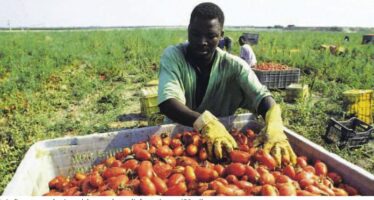UNRWA: Gaza blockade anniversary report
![]()
As the Gaza blockade moves into its fifth year, a new report by the UN’s agency for Palestine refugees, UNRWA, says broad unemployment in the second half of 2010 reached an unprecedented 45.2 per cent, one of the highest in the world. The report released today, finds that real wages continued to decline under the weight of persistently high unemployment, falling 34.5 per cent since the first half of 2006.
“These are disturbing trends,” said UNRWA spokesman Chris Gunness, “and the refugees, which make up two-thirds of Gaza’s 1.5 million population were the worst hit in the period covered in this report. It is hard to understand the logic of a man-made policy which deliberately impoverishes so many and condemns hundreds of thousands of potentially productive people to a life of destitution.”
The UNRWA report finds that the private sector was particularly badly hit compared to the government sector. In the second half of 2010 businesses shed over 8,000 jobs, a decline in employment of nearly 8 per cent relative to the first half of the year. By contrast, the Hamas-dominated public sector grew by nearly 3 per cent during the same period.
“Our research indicates that since 2007, Hamas has been able to increase public employment by at least one-fifth,” said Gunness. “Even more striking, in what should have been a relatively good year for the Gaza private sector with the supposed easing of the blockade, the public sector generated 70 per cent of all net job growth as between second-half 2009 and second-half 2010. If the aim of the blockade policy was to weaken the Hamas administration, the public employment numbers suggest this has failed. But it has certainly been highly successful in punishing some of the poorest of the poor in the Middle East region.”
“Amid this economic gloom, UNRWA will continue with its human development work in health and education, running schools for some 213,000 children in Gaza, helping them towards a belief in an educated, dignified and peaceful future,” said Gunness. “But the number of people coming to us, the abject poor living on just over 1 dollar a day, has tripled to 300,000 since the blockade was imposed and with many reconstruction projects still awaiting approval, the future looks bleak.”
Related Articles
Caporalato, gli sfruttati sono 430 mila
![]()
Aumento di trentamila unità in 12 mesi. In agricoltura il boom dei voucher maschera il lavoro nero In un anno l’uso dei ticket è cresciuto del 67%. Doveva fare emergere il sommerso, è servito al contrario
Rapporto Ocse. Italia paese tra i più vecchi, giovani sempre più precari
![]()
Rapporto «Preventing Ageing Unequality». Le diseguaglianze salariali si tradurranno in disparità tra i pensionati
Invito. La crisi e il sociale. Triennale di Milano
![]()
Lo scenario della crisi è destinato ad incidere in modo significativo non solo sugli assetti del welfare ereditati dal Novecento, ma anche sul ruolo dell’associazionismo sociale della rappresentanza, del privato sociale e del volontariato organizzato nei territori. Occorre quindi interrogarsi intorno ai significati che può assumere il termine crisi, il suo carattere strutturale o meno, il suo essere eventuale occasione per pensare ed agire in modo nuovo nel sociale, ambito tutt’altro che marginale per tentare di rilanciare un’idea di futuro condivisa.





